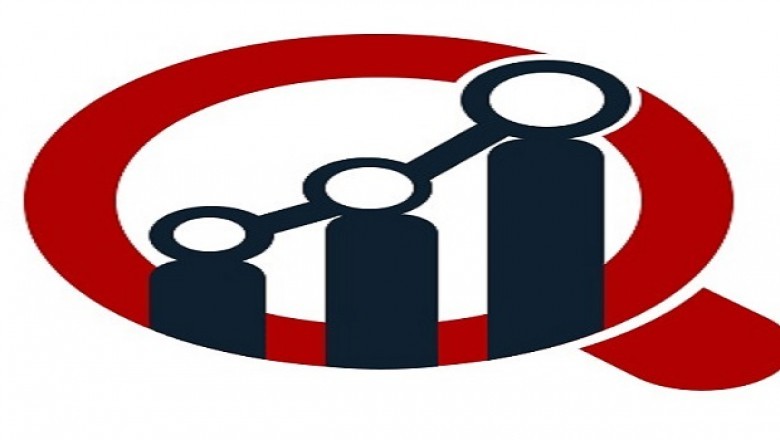views

Barcode Label Printer Market
The Global Barcode Label Printer Market is expected to reach USD 3,517.8 million by 2025 at a CAGR of 5.31% during the forecast period. Market Research Future (MRFR), in its report, envelops segmentation and drivers to provide a better glimpse of the market in the coming years. This printer is designed to print labels with barcodes or QR codes that are affixed on the outer packaging of the product. It stores and reads an international article number (EAN), a uniform product code (UPC), and codes used in mailing, accounting, and any other purpose when scanned by a barcode scanner. These printers either use direct thermal or thermal transfer printing technologies to print labels.
Access Report Details @ https://www.marketresearchfuture.com/reports/barcode-label-printer-market-9567
Competitive Analysis
The key players of the global barcode label printer market are Avery Dennison Corporation (US), Dascom Holdings Ltd (China), OKI Electric Industry Co., Ltd (Japan), Printronix Auto Id Inc. (US), TSC Auto Id Technology Co., Ltd (Taiwan), Apogee Industries Inc. (US), Sato Holdings Corporation (Japan), Honeywell International Inc. (US), Zebra Technologies Corporation (US), Toshiba Tec Corporation (Japan), Canon Inc. ( Japan), and Fujitsu Ltd (Japan) among others.
- In January 2020, Sato launched CL4NX Plus, a thermal industrial printer, which was developed due to increasing demand from various verticals such as automotive, retail, and manufacturing.
- In October 2019, Avery Dennison Corporation launched a portable RFID label-printing device that allows the retailers to print, encode, and apply an EPC UHF RFID tag to a cargo package, product, or asset, which improves the efficiency of retailers in printing and affixing the labels.
Segmental Analysis
The global barcode label printer market has been segmented based on product type, technology, resolution, end-user, and region.
Based on product type, the market has been segmented into an industrial printer, desktop printer, portable printer. The industrial printer segment accounted for the largest market share in 2018, with a higher market value. Industrial printers designed to handle any type of application, from commercial light-volume, need to rug. These printers are highly durable and capable of high-volume label printing. Desktop printers are flexible with USB, parallel, and serial connectivity interfaces. These printers are used for economic low-volume needs such as wristband printing to rugged, industry-grade printing requirements. Portable printers are used as labeling like shelf edge, pick and pack, and markdown. These are compact so easy to use, and thus they are widely used in retail outlets, warehouses, and in the transportation sector to enhance the productivity of processes.
Based on technology, the market has been classified into dot matrix, laser printing, thermal transfer, direct thermal, and inkjet. The direct thermal segment accounted for the largest market share in 2018, while laser printers are the fastest market segment. Direct thermal technology is suitable for indoor applications. It eliminates the need for ribbon, unlike thermal transfer printing. Thermal transfer technology is preferred over direct thermal printing. It provides improved image quality. Inkjet printing drives onto printing paper, creating a digital recreation of an image. This printing is suitable for high quality small as well as large font codes. Laser printing used to produce high-quality text and graphics. It can print more than one barcode label at a time using a sheet of labels. Dot-matrix is made of hammers and ribbons to create an impact on paper. These printers are used to print bar code labels in low resolution or pixel density.
Based on the resolution, the market is segmented into three sub-segments below 300 DPI, between 301 to 600 DPI, and above 600 DPI. The 300dpi segment accounted for the largest market share in 2018. It is expected to register the highest CAGR during the forecast period. 300dpi is standard print resolution, which is used to print large barcodes such as shipping labels. Between 301 to 600 DPI gives the result of fine print resolution. It provides better quality as compared to low-resolution printers. Above 600 DPI create sharp barcode labels, used for small text, intricate graphics, high-resolution barcode labels. These printers are more expensive than others.
Based on end-user, barcode label printers have applications in manufacturing, transportation & logistics, retail, government, and healthcare sectors in their day-to-day operations. The manufacturing segment accounted for the largest market share in 2018. The transportation & logistics segment was the second-largest market in 2018. Manufacturers keep printers in the workstations on the factory floor. Manufacturers trace the products and monitor the supply chain process through barcodes. It provides precise timing, tracking, and consistency to the logistic process. In retail, the barcode label accelerates several retail processes, thereby saving time and enhancing the customer experience in stores. It helps to create barcode labels for patient ID tracking, hospital admission, hospital nursery monitoring, specimen/blood labeling, medication tracking, and staff ID & access control.
The global barcode label printer market segmented into Europe, Asia-Pacific, North America, Middle East & Africa, South America. Europe accounted for the largest market share of 32.21% in 2018, with a market value of USD 799.6 million; it is expected to register a CAGR of 5.35% during the forecast period. Asia-Pacific was the second-largest market in 2018, valued at USD 727.2 million; it is projected to register the highest CAGR of 6.90%
Free Report Sample @ https://www.marketresearchfuture.com/sample_request/9567











